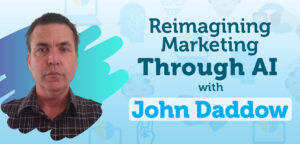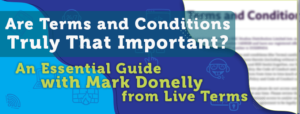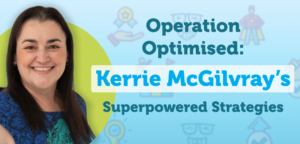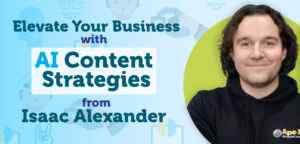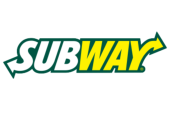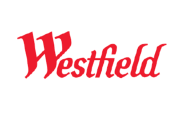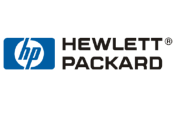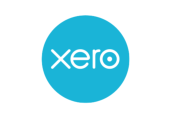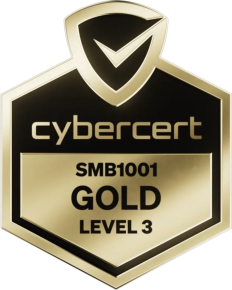Converting your leads into sales is one of the major ways to improve the bottom line of your business. Josh was joined by Luke Charlton from Jumpstart Your Funnel who shares how to start finding leads and how to make sure you’re getting good leads, not just lots of them.
Over the past 9 years, Luke has helped hundreds of coaches get more clients with email. After sending over 1 billion emails, he discovered nine irresistible email offers that can get bookings in your calendar fast.
Show your brand and authenticity with a premium business email. Check out our $1 premium business email deals!
How to Find Lots of Good Leads (Not Just Lots of Leads)
A lot of sales professionals that I work with are more concerned with lots of leads. If an ad is generating leads, the assumption is it’s good. But not every lead is equal.
As an example, I have a client who helps writers and screenwriters to get their novel or screenplay published or bought. I spoke to her about her campaigns, asking about the quality of people coming through. Basically, she had an offer to attract her market, which is how to write stories that sell.
The good side of this is it’s getting her a lot of leads.
The downside was that a lot of these leads were newbie novelists.
Identifying Your Ideal Client

I said why don’t we create an offer that speaks to this more experienced dream client that you’re trying to attract? One of the things that we came up with is something like “Seven Reasons Your Book Was Rejected” because a lot of professional writers send in their story and they get rejected. Usually, they’re not told why. Often, they don’t even get a response. This lead magnet kind of shares why that happens to them.
Whatever your business is, it all starts with getting clear on your market and thinking through who your dream client is. From there, you have to kind of pick-up composites back and think about who is that person who’s going to spend that amount of money. Usually, it’s someone that has more experience and already invested time and money in this area. Usually, they’re a professional or a business owner who is going to spend money on a high-ticket service.
If you just go out with a broad message, you will attract beginners. If you want to attract beginners in your particular market, that’s fine but a lot of the professionals that I work with want to attract a premium client who has money and wants to invest in 3,000 or higher ticket service.
Do you want a fresh pair of eyes to look into your business? Talk to a dork to streamline your business processes.
How to Build Your Initial Email List
Some professionals think they need a fancy website right away. I’ve got a website that was created only in late 2020, but before that, my only way that I got clients was literally an opt-in page and a thank you page. I didn’t have a proper website like I do today because you don’t need it.
To generate leads, all you need to do is to create a lead magnet or a piece of content. Typically, that’s a short PDF. You don’t have to create a long video series or a webinar. Again, it’s just a bit of content that attracts your ideal client.
How do you know what lead magnet to create? Again, it all starts with the market.
Then you advertise your lead magnet. This is where it might be a little bit different to other people. Other people say you should do organic traffic, such as going to Facebook groups, in the beginning. I do not like to do organic traffic in the beginning.
Test Your Message and Lead Magnet With Ads
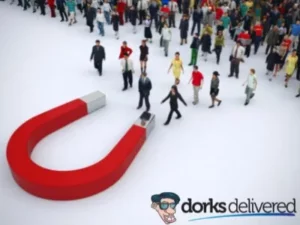
Run ads in the beginning to spend like $20 to $30 hours per day. That’s all it takes to test your message. When someone opts in, you just start seeing daily emails. Once you get some clients, reinvest a little bit more into ads, up the budget to $40 a day and get some more clients then up to $50, and so on. That’s how you scale slowly and confidently.
Once your message is converted, you add organic marketing strategies. For example, I now do podcast interviews. I didn’t do this in the beginning. I added these after I got my message via advertising converting clients. Now I do other organic strategies that are going to take months to give me an ROI. I’m okay with that because I’ve got my ad campaigns running.
You may be qualified to get a free website and social media audit worth $500.
How to Write a Copy That Resonates with Your Dream Clients
You’re trying to attract your dream client or ideal client so find out what they desire: their biggest frustrations, their biggest fears, and one of their biggest challenges around your topic (i.e., the problem that you’ve solved). You do that research, and you write it all down. When you go to produce your emails or blog content, you don’t have to think up what’s the message that’s going to resonate.
When I write a copy for my clients that I run ads for, I don’t just sit down with a white piece of paper and go, what would be a great ad? I just go to the market with the research that I’ve done, and I use that research to help me come up with an email or to come up with an ad for their campaigns.
I know that the ad is going to resonate with the market. I know that they’re going to click on that ad, they’re going to be attracted to that offer, they’re going to love to read that email because I’ve done that research and found out what they desire and what they’re frustrated with. All I do in my marketing and sales is just reflect back.
If they tell me they’re frustrated with their emails going into the Promotions tab in Gmail, I might write something like “How to Get Your Emails to Go into the Primary Tab More Often.” Actually, I have an email with that exact title, and I didn’t come up with that. The market told me what it is that they’re frustrated with so now I create a bit of content that I know that’s going to resonate.
To answer your question about the sales process, I just reflect back in my emails on what it is that I know that they want, what they desire, or what they are frustrated with and say, this is what I help with. If you’re interested in getting more high-paying clients, let’s have a chat. I just send regular emails or a data email saying, if you want to help with getting more clients, I’ll show you how to do that and if you’re interested, let’s have a chat. That’s a message that I know resonates because I’ve done my research.
How To Find Out If You’ve Got a Good Copy
To test your message, just put it out there and see what happens. That’s the beauty of direct response.
As you put the message out there, you see if people are opting into this and if they are booking in your calendar. If they’re not, just change the message. Try a different angle or try a different offer and see what happens.
The Dos and Don’ts in Email Marketing
Do Send an Email Every Day
I help all service professionals, but I predominantly work with coaches. Most of them want to know how to get clients, and I simply tell them to build their email list with a lead magnet that attracts quality leads (people who have the problem that you solve when they’re looking to invest a lot of money to solve that problem) and then you just send them a daily email.
When people hear “daily email” they go, “That’s a lot of emails. I send only one email and I’m already getting unsubscribes. If I send one daily, I’m going to lose my whole list.”
And that’s fair enough. If you continue to send emails the way that most people teach, which is usually very content heavy, or some gurus, who just love to pitch, you’ll probably lose your list. Marketing gurus just don’t care about burning out their list because they spend tens of thousands of dollars a day on ads so they’ve always got new leads.
For most professionals and businesses in Australia, that’s not really a viable strategy and neither is sending a daily email that’s full of content because what happens is people notice this. When people first jump on your list, you send them content and the open rates are quite high, but then they rapidly decline over the first few weeks. You wonder, “are they becoming less and less engaged with my emails?”
This is exactly what happened to me when I started sending more regular emails seven years ago. One of the things that I did was take a couple of steps back because I knew email works; I just wasn’t getting the results that I wanted so I did some research on what people are paying attention to because they’re not reading my 3 to 5-minute emails.
Do Find Out What Makes Your Market Open Emails
If you go on Google and look up how much time people spend on social media, Netflix, or YouTube, it’s hours a day.
When you look at that, you’ll probably wonder why they’re wasting hours a day on Netflix or YouTube but not spending three minutes reading my email? When you look at it from that angle, the answer is obvious: the content is entertaining.
Our emails are full of content. It might be helpful, but it’s not really entertaining. So, I started to mix entertainment in my emails, and I have a really simple framework.
It’s just a story in the beginning and then a lesson from that story, and then you close. People love stories and because you’re writing a story, people start to look forward to your marketing. It’s the story that’s entertaining, it’s the lesson that’s valuable. The close at the end is how you start getting clients coming back. See Luke’s sample emails.
When I changed to this format, it was really eye-opening especially when people say that they actually enjoy getting my marketing. That’s what I now share with other coaches and service professionals: how to create marketing that people love to read and buy from, and that also provides value.
Don’t Skip a Day.Be Consistent

Send regular emails. Ideally, you want to send one daily. The more you email, the more money you make. What I found is the more that I sent these storylines and closed emails, the more appointments that I booked and the more revenue that I got.
If I didn’t send one on Saturday and Sunday, I would get less appointments and less revenue, so I recommend sending them even on Saturday and Sunday, particularly if you’re a service professional, because when people sign up for a high-paid service like coaching or consulting, it requires a lot of trust and credibility to be present in the sale before they buy. The more you email, the faster you build that trust and credibility.
If I send an email every day, that demonstrates my expertise—it has value, it teaches something—so they can start to build that trust. If I’m sending seven emails per week and you’re sending one per week, I’m just going to win just by the fact that I’m sending seven times more emails because I’m building that trust and credibility a lot faster.
Don’t Automate in the Beginning
I recommend that you don’t automate in the beginning because most service professionals aren’t clear on who their dream client is. They haven’t got that figured out.
If you create a hundred automated emails, that’s a lot of work. I don’t like funnels because you spend months setting up a webinar funnel or a book funnel you don’t even have a converting offer yet. If you spend all this time and it doesn’t convert, you’re onto the next bright shiny object. I was always changing from one bright shiny object to another until I decided to keep it simple.
If you start sending emails manually and they’re not converting, it allows you to quickly change on a dime and change your offer at the end and test a new offer and see if that works.
Make sure that your daily emails are converting before you automate them. Once you have an offer that just gets you appointments, chuck it in a long email automation and then you don’t have to do any daily emails later. You’ve already written your hundred or however long you want your automated email series to be.
Don’t you need help with your email automation? Talk to us!
How Many Emails Is Too Many Emails
When people come onto my list, if they’re like a warm lead they’ve heard from me on a podcast or from other referrals, they’ll be ready to buy a lot faster than someone who is coming to me from a paid ad.
With your cold leads, keep it simple. Just send an email every day with an offer to work with you and then the rest will take care of itself. Just think of your leads as kind of being on a conveyor belt. Some people are at the beginning of the conveyor belt and when they fall off, that’s when they buy. Some people are further back and a little bit more warming up, and it’s going to take a bit more time for them to get to the end of the conveyor belt.
It doesn’t really matter if you just focus on sending an email each day and knowing that as long as you send an email each day with an offer to work with them, a story and lesson, a close email that’s entertaining and valuable, you’re going to get people at the end of the conveyor belt. Just do it consistently for 12 months.
Now you’ve got 360 emails that are converting that you can just chuck in an autoresponder. Instead of doing the daily email for the rest of your life, you did it for a little while. You just made sure your message is converting before putting it in email automation.
If you’re a service professional who wants to get more clients, get a list of irresistible emails you can send to your leads. Download The 9 Email Offers That Get Coaching Clients For Free




